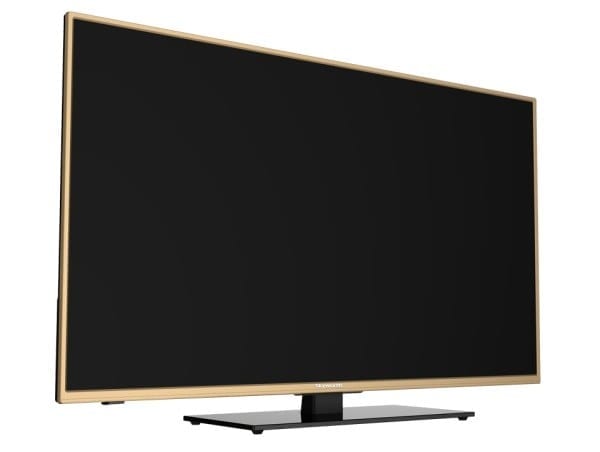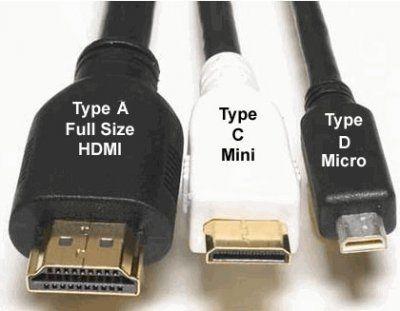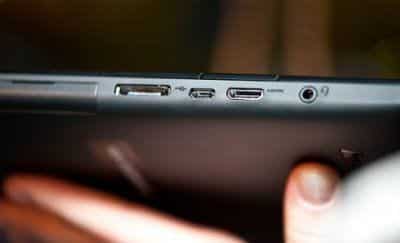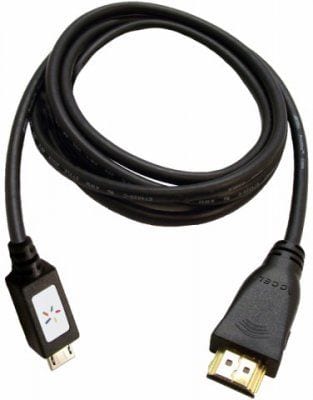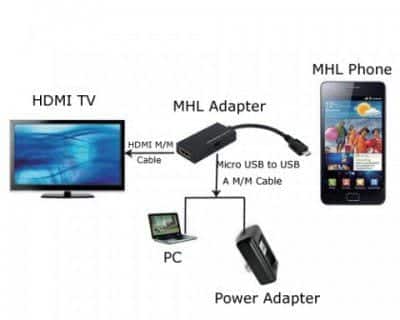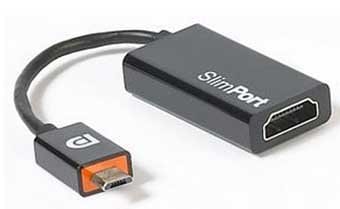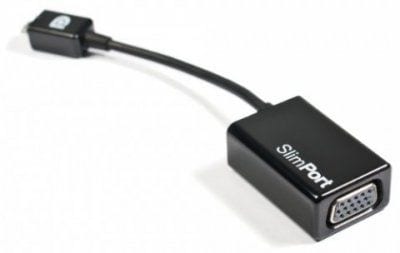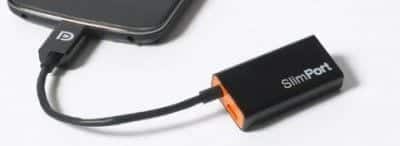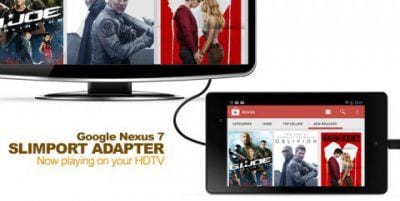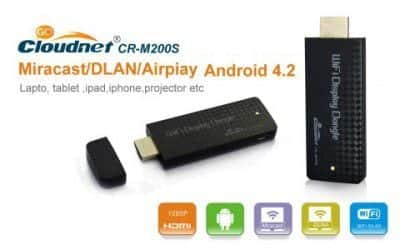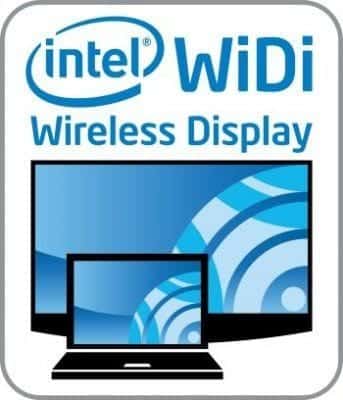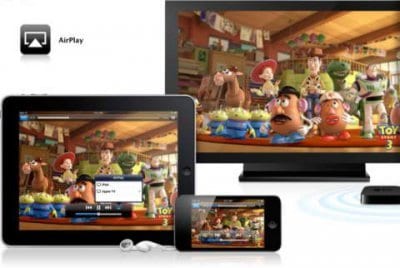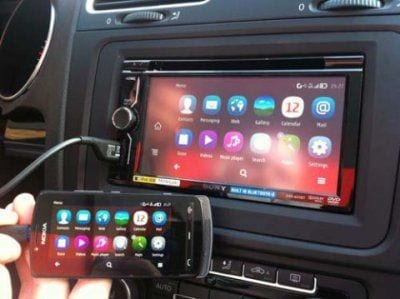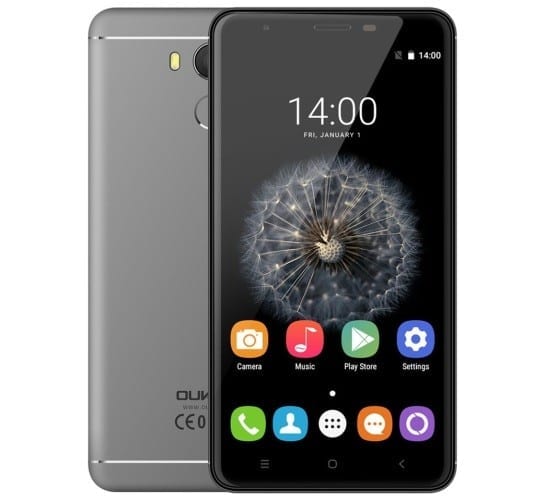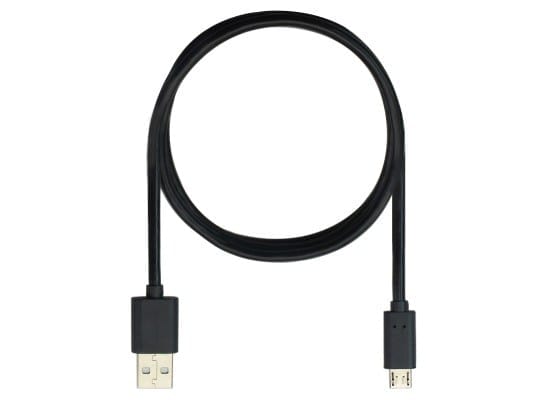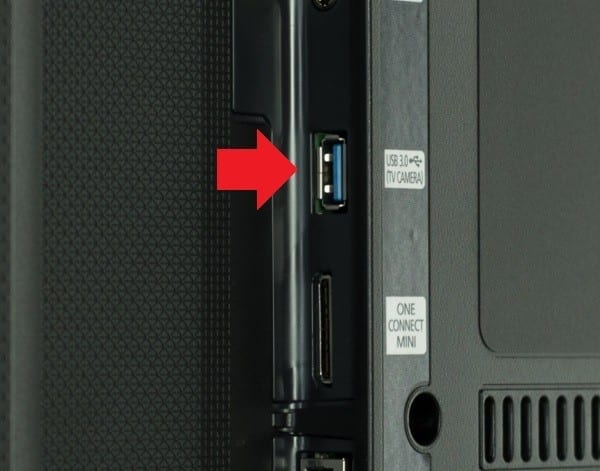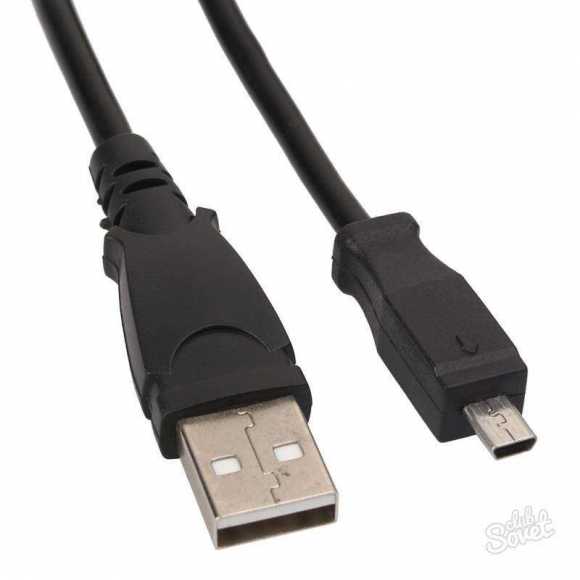The gradual growth of tablet and smartphone functionality leads to the fact that mobile devices can be connected, if desired, to a computer and TV directly, without the use of any additional devices and software. If you connect to a computer for a long time it will not be difficult, here to connect your TV to your device requires a slightly different approach to the process and some accessories not included in the device, cable and connectors presence.
All you need to connect is to have a connector on the smartphone or tablet, according to the TV connector and the cable with the connectors required.
Most common ways to connect mobile devices to your TV
One of the first criteria that allow the connection of a smartphone to a TV set is the standard transmission of HDMI data. This standard appeared 12 years ago and originally intended for communication (connection) of media players and TVs.
With the scattered spread of mobile phones, standard HDMI has undergone some changes, such as software, and resizing of connectors – mini-HDMI and micro-HDMІ connectors. To connect to a TV using the HDMI standard, you will need the HDMI-micro-HDMI adapter cable or HDM-mini-HDMI or standard HDMI cable⇔HDMI. Of course, subject to having your smartphone and TV data connector.
Buy any HDMI data cable HERE
At first, the HDMI standard supports video-resolution transmission with a frequency of 60 Hz, provided the audio transmission (number of channels – 8), with the highest frequency of 192 kHz. In this case, standard HDMI has maximum data transmission speed, equivalent to 4.9 Gbit / s.
As technology has grown to the standard, HDMI has been sending information, supporting data in 3D graphics format, increasing the quality of transmitted audio and video streams. The latest to date is a standard HDMI 2.0, which can transfer data to Ultra HD format (video resolution of 3840 * 2160 pixels/inches and a frame rate of 60 fps) or in 3D Full HD format (video resolution of 1920 * 1080 pixels/inch). In the last case, it is possible to change the aspect ratio of the image as 21 – 9.
Also, this standard can transmit sound to 24 channels, with a frequency of 1536 kHz. The maximum available data rate on standard HDMI 2.0 reaches 18 Gbit / s.
The HDMI standard is convenient because many devices support this standard and have the required connectors. At the same time, to work on this standard, not more devices, nor more food. Plus there’s a micro-USB port, where you can connect something else.
The only lack of HDMI is the need to put in case of a separate connector, which is quite complicated in the development of new smartphones, especially in a thin case – HDMI connector is big enough, and it increases the thickness of the case of the device.
These problems are resolved by the standard MHL, which is a modified HDMI and from the very beginning of development focuses only on mobile devices.
The MHL interface was developed by Sony and Toshiba (originally developed for the HDMI standard) and Nokia with Samsung, which joined them later.
The MHL standard is a combination of micro-USB and HDMI standards – a micro-USB interface is used to charge the device and uses HDMI to transmit audio and video of high quality.
The latest version of MHL 3.0, which is certified in the summer of 2013, can transfer data to an Ultra HD format (video resolution of 3840 * 2160 pixels / inches and a frame rate of 30 fps), has a sound transmission technology to support 7.1 (DTS-HD and Dolby TrueHD) and may charge the device with a power consumption of up to 10 watts. The first “swallows” that support the MHL 3.0 interface, Sony Xperia Tablet Z2 and smartphone Sony Xperia Z2, recently presented at the Barcelona MWC 2014 exhibition.
At present, there are three types of MHL cables.
The most common form is a small size adapter, where there is an HDMI input where you connect the HDMI cable to the TV; input micro-USB for power supply (no connection to the power supply without TV image transfer); and the output of micro-USB, where you’re connected to a tablet or smartphone.
This method can be called universal, but it is not pleasant you need a couple of additional cables.
The second type of cable is a cable with the appropriate connectors at the ends – a connector is for connecting to the TV HDMI input, and the second connector is made for the MHL-output device. During connection to this type of cable, the battery of the smartphone will be charged in parallel with the transfer of data to the TV. True, this standard is not supported by all modern TVs.
The third type of MHL-cable is an exclusive development of Samsung. The main difference between these cables is the number of contacts used – the standard connectors use 5 pins (usually micro-USB), and in the development of Samsung they used 11.
Using extended contact groups allows to supplement the functional Samsung MHL interface, but it requires a special adapter to connect the 11-pin device with a 5-pin connector and vice versa, 11-pin cable to other mobile devices.
The undoubted advantage of the MHL interface in comparison with HDMI is the possibility of parallel charging of the device during data transfer and lack of additional connectors on the device.
The main disadvantage of using the MHL standard is that you can not connect to any external drive device, using MHL and USB host.
Of course, there will be no competition in a big market – in contrast to the MHL interface, Analogix has developed its own vision of what should be easy and fast between the smartphone and the TV. This standard is called SlimPort. But this standard is not a completely exclusive development of the company – the basis for the use of SlimPort is the technology developed by the VESA association, DisplayPort.
SlimPort is very similar to its MHL capabilities – there is also support for the transmission of 4K video and 8-channel audio transmission. The same use of micro-USB smartphone connector. Also, to connect to a monitor or TV that supports HDMI or DisplayPort standards, you will need an adapter similar to that used for the MHL adapter.
For the extraordinary connections of the latest smartphones to the outdated TV, the SlimPortal VGA adapter is being developed.
SEE: How to connect Sony Xperia Smartphones to PC
For all its similarities, there are differences between the standards of SlimPort and MHL – for work with SlimPort you do not need to further connect the smartphone to power; you can leverage through SlimPort to connect external storage devices – the standard originally implemented the work of the USB host; use of the standard SlimPort does not bring additional patent costs, which are the owners of devices with HDMI – have the ability to pay a small amount (from $ 0.05 to $ 0.15) for use of patents.
Although, the SlimPort, which MHL uses the same micro-USB connector in operation, does not match. Perhaps the reason why the standard SlimPort is not widely used and is used primarily in Nexus smartphones and in some Chromebooks.
Miracast’s interface, in contrast to the previously described data transmission standards, has no cables and wires for connecting a smartphone to TV – the standard Wi-Fi Direct use technology. The standard Miracast was built by the alliance of Wi-Fi equipment manufacturers and it appeared in the global market several years ago.
To connect to the TV with standard Miracast, you will need a Wi-Fi module on your device and a suitable Wi-Fi module built into your TV. If your “box” has no such module, you can connect your smartphone and TV with a special device – an external module of Wi-Fi plugs on your TV’s HDMI connector.
DONT MISS: How to Connect Samsung Galaxy S6 to PC
Compared to previous “wired” standards, Miracast has some fewer video and audio transmission opportunities – Video is transmitted with a maximum resolution of 1920 * 1200 pixels/inch, the sound can be transmitted to a maximum of 5.1 Dolby AC3. But often watch a movie or play some kind of “light” toy of these parameters is enough “for the eyes”. Actually, the standard Miracast is still “young” and the appearance of its ability to send a video of higher resolutions, as well as more “channels” sound is still the leader.
From the advantages of this standard, it should notice some incompatible versions of Miracast installed on different models of smartphones, TVs and external Wi-Fi modules.
On the other hand, an obvious plus is the lack of wires and cables to connect the smartphone and TV. And so Miracast has all the requirements for becoming a universal data interface in the future.
WiDi technology (from Wireless Display), which was developed and enthusiastically “promoted” by Intel Corporation, was presented as a successor to the technology of Miracast.
This interface operation is used outside the Wi-Fi frequency, which leads to “parity” between WiDi and Miracast – almost the same with Image Transfer settings (1920 * 1080 pixels / inch), the same 5.1 sound, and even complete compatibility between interfaces, implemented in the WіDi 3.5 version.
Often the WiDi interface is used in notebooks with Intel-native-processors, but, due to the fact that corporate processors are not so often seen on tablets and smartphones, you can not find in its most device.
Focusing on the principles of “all-in-one” Apple corporation cannot pass data from your smartphone to your TV (or any other device or corporation that has passed the interoperability certification) and comes up with a AirPlay interface.
To connect and work with this interface, you do not need any additional settings – devices that have AirPlay “on board” are visible to each other on the same local network.
The logical continuity of data transfer between Apple smartphone and tablet, sold to AirPlay, AirPlay Mirroring becomes a technology that allows the connection of a smartphone with a large screen, work with documents, presentations, and accept works made inaccessible.
The “penetration” of mobile globe technology of cars leads to the emergence of technologies for connecting the smartphone and displaying the controls and navigation installed on the car.
A public data exchange protocol Mirrorlink allows you to display information on the onboard car display by connecting the smartphone and display to a USB cable. At the same time, the display may only be a “picture” of the smartphone screen and can display data from installed on special device applications that are optimized for car use.
CarPlay’s data exchange protocol, such as Apple’s “things,” is intended only to use corporate smartphones and tablets.
After connecting to iOS-device, the user will soon get special “car-specific applications” that output data from the smartphone to the car display. In “standard” you will see information on the phone, message, music files, display navigation charts. Data management can be done via the steering wheel, assistant Siri voice, pressing the touch screen – everything depends on what automaker will choose. Either in a combination of ways.
A large number of cars with support for CarPlay and Mirrorlink protocols will appear in the second half of this year. In the future, it is planned to support these protocols by virtually all automakers.
Of course, to cover all the existing options and to connect the smartphone to a TV or a combination of monitors to the same article it is impossible – there are many applications that connect “to all” smartphones or tablets in a monitor, a variety of remote access methods and more.
But for making a presentation, connect the tablet to a monitor or projector for ease of work or watch a movie, you have been able to deal with what standards are in your device, and wherein a monitor or projector (for example), but to understand and to remove non-compatible options, you can successfully connect a smartphone or tablet with a TV / projector / monitor and achieve the desired result.
If you have a modern TV and you look at the back or part of the case, you will see a large number of different ports, among which are likely to be a USB port. Since there is a USB port, this means that you can connect other devices here. This is true and the smartphone based on Android is no exception.
True, there are some nuances here you need to know about. The fact is not all televisions know the phone as a USB flash drive (drive), which means if you want to watch movies downloaded to the phone, this is not possible. And this method does not work even if you move the device to other modes. If this is your case, the maximum you can do is to view the pictures taken on the phone. However, everything can be exactly the opposite – we need to check. And your gadget will be charged from the TV.
What is needed?
Need three things.
TV with USB support.
Smartphone-based on Android.
MicroUSB cable.
What needs to be done?
Get the cable, insert it into the USB port on the TV. It looks like this:
There are several USB ports on the TV.
Connect the second cable to the micro USB port of the smartphone. When connecting devices, your mobile gadget will charge a fee. This is a good sign.
Turn on TV now. If this is the case, bring the console and press the Source button here, then select the connected phone.
You can see the smartphone file system, which indicates that the connection is successful.
However, you can only see pictures taken on the smartphone camera. Apparently, in this case, file system mobile devices not supported.
What if the TV does not see anything on the smartphone?
Most likely, you need to change the connection type. To do this, call the shutter, there you will see the type of TV connection.
Click here, will open all available connection types. Try selecting “USB-drive” or, if this option is not available, “Camera (PTP)”.
By the way, if you do not see the kind of connection at all, try connecting the smartphone to the computer, changing the connection type, and then connecting it to the TV again.
Now many people want to watch something exclusively on the big screen, but the program is not at the right time. Therefore, there is a solution – connecting other devices to the TV screen. To connect, for example, the TV phone may have a USB connector. This connector is available on modern television.
How to connect Android to your TV
First, connect Android to the appropriate TV socket with USB cable. Next, check out the developer settings. Debugging over USB should be in “off” mode.
How to connect Android to your TV connection settings
Select Connect as external storage. After that, the menu appears for playback on the TV screen. You can play pictures, movies, and music.
Other ways to connect Android to your TV
This method is similar to flash drive manipulation – connect to the TV and everything is ready. But there are other connectivity options via USB.
For example, use an HDMI cable. To do this, you should have a suitable telephone connector. Although such connectors are usually on tablets and top boxes.
How to connect Android to TV via Wi-Fi
It’s possible to connect Android to the TV without wires. Do not go anywhere, no need to do anything extra. And the wire may be lost.
You need to know that connected TV supports Wi-Fi signal. Otherwise, you need to purchase a special adapter for Wi-Fi. It should be connected to the HDMI port of the TV.
Android also supports the functionality of full copying of graphic images from the phone to the TV. This is called Miracast. Or you can use a special Google Play Streambeals application. There are applications that allow you to view photos, videos and music play through Wi-Fi, and then broadcast after a short while on TV. It is very simple.
That’s all the basic tips on how to connect Android to your TV.
